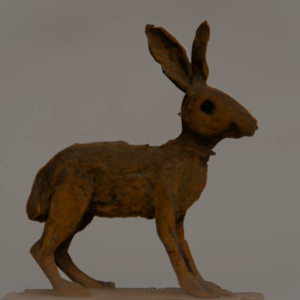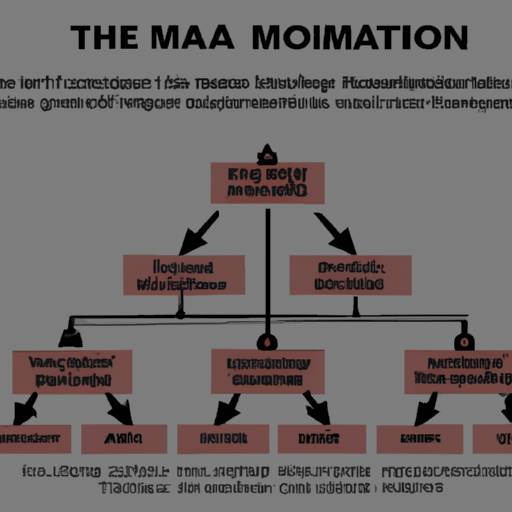Let’s look past George de Mohrenschildt’s relationship with Lee Oswald, and focus on his possible links to Russian intelligence.
George de Mohrenschildt: A Background Overview
Early Life and Education
- Born on April 17, 1911, in Mozyr, Belarus (then part of the Russian Empire), George de Mohrenschildt came from a privileged background.
- He was raised in a wealthy family and received a high-quality education, attending prestigious schools in Russia, Poland, and Germany.
- Fluent in multiple languages, including Russian, French, English, and German, de Mohrenschildt possessed the intellectual capacity to navigate diverse cultural landscapes.
The Move to the United States
- In the early 1930s, de Mohrenschildt’s family fled the political turmoil in Europe and settled in the United States, seeking stability and opportunities.
- George de Mohrenschildt, a young man at the time, embraced this new beginning in America and was determined to make the most of his new surroundings.
Career and Connections
- De Mohrenschildt embarked on a successful career as a geologist, working in various locations across the United States.
- His profession offered him opportunities for professional networking and establishing connections with influential individuals.
- A turning point in de Mohrenschildt’s life came when he met and married Jeanne LeGon, a wealthy socialite. Their marriage catapulted him into elite social circles, exposing him to influential figures in politics, business, and intelligence.
Relationships with the Kennedys and Other Notable Figures
- De Mohrenschildt’s connection to the Kennedy family was through his wife Jeanne, who was a close friend of Jacqueline Kennedy.
- This connection played a crucial role in de Mohrenschildt’s later involvement with John F. Kennedy’s presidential campaign and subsequent government appointments.
- Additionally, de Mohrenschildt formed relationships with other notable figures, such as Richard Nixon, George H.W. Bush, and numerous wealthy oilmen, which further expanded his network and influence.
Alleged Ties to Russian Intelligence
- The most controversial aspect of de Mohrenschildt’s life centers around the allegations of his involvement with Russian intelligence.
- Numerous critics and researchers have speculated about his potential role as a Soviet spy, particularly during the Cold War era.
- While hard evidence to confirm or refute these allegations remains elusive, certain circumstantial factors have fueled the suspicions, leading to extensive investigations and conspiracy theories.
Connections to Russian Intelligence
In this section, we will delve into the various connections and associations that suggest George de Mohrenschildt’s involvement with Russian intelligence. By exploring his interactions with prominent figures in the Soviet Union and examining documented evidence and testimonies, we aim to shed light on these allegations.
Interactions with Soviet Figures
Meeting with Ivan Ilyin
One notable connection that raises suspicion is de Mohrenschildt’s meeting with Ivan Ilyin, a prominent philosopher and political theorist in the Soviet Union. Here are some key details regarding this interaction:
-
- De Mohrenschildt met Ilyin in 1938 while studying in Germany.
-
- Ilyin was known for his close ties to the Russian intelligence community.
-
- This meeting suggests a potential introduction to Russian intelligence through Ilyin.
Association with Yuri Nosenko
Another important connection is de Mohrenschildt’s association with Yuri Nosenko, a KGB officer. Here’s what we know about their relationship:
-
- Nosenko defected to the United States in 1964 and claimed to have information about Lee Harvey Oswald, the alleged assassin of President John F. Kennedy.
-
- De Mohrenschildt was a close friend of Oswald and provided him with various forms of support.
-
- Nosenko’s testimony suggests that de Mohrenschildt may have been involved in intelligence activities related to Oswald.
Documented Evidence and Testimonies
Warren Commission Testimony
During his testimony before the Warren Commission, de Mohrenschildt made several statements that could be interpreted as evidence of his involvement with Russian intelligence. Here are some key points:
-
- He admitted to providing information to the U.S. Defense Intelligence Agency about Oswald’s activities in the Soviet Union.
-
- He claimed that his actions were driven by a desire to help the United States, but some speculate that this could have been a cover story.
-
- De Mohrenschildt’s inconsistencies and evasive answers during the testimony raise further doubts about his true intentions.
CIA Files and Surveillance
Declassified CIA files and surveillance records also contribute to the suspicion surrounding de Mohrenschildt’s connections to Russian intelligence. Here are some significant details:
-
- The CIA had a file on de Mohrenschildt and conducted surveillance on him due to his association with Oswald.
-
- These files indicate that de Mohrenschildt had been in contact with Soviet intelligence officers.
-
- While these files do not provide concrete proof of his involvement, they add to the overall picture of his connections.
Activities and Influence
George de Mohrenschildt, a Russian-born American geologist and geophysicist, has long been a subject of interest when it comes to his activities and potential involvement in Russian intelligence. In this blog post, we will delve into his various activities, his role in disseminating information, and the possible impact he may have had on intelligence operations.
Activities
Involvement in Projects
George de Mohrenschildt was known to have been involved in various projects that had potential intelligence implications. Some of these projects include:
-
- Oil Exploration: As a geologist and geophysicist, de Mohrenschildt worked on oil exploration projects in different parts of the world. This gave him access to valuable geological data and potential contacts that could have been of interest to Russian intelligence.
-
- International Business: De Mohrenschildt was involved in international business ventures, often connecting American companies with foreign partners. This allowed him to establish a network of contacts that could have been exploited for intelligence purposes.
Connections and Relationships
De Mohrenschildt had numerous connections and relationships that could have provided avenues for intelligence gathering and dissemination. Notable connections include:
-
- Lee Harvey Oswald: De Mohrenschildt had a close relationship with Lee Harvey Oswald, the man accused of assassinating President John F. Kennedy. This connection has raised suspicions about de Mohrenschildt’s potential involvement in intelligence-related activities.
-
- Russian Emigres: De Mohrenschildt had ties to the Russian emigre community in the United States. Through these connections, he may have had access to information and resources that could have been of interest to Russian intelligence.
Influence
Dissemination of Information
As a well-connected individual, de Mohrenschildt had the potential to disseminate information to various parties, including Russian intelligence. This could have been done through:
-
- Personal Conversations: Given his close relationship with Lee Harvey Oswald, de Mohrenschildt could have passed on information obtained from Oswald to Russian intelligence contacts.
-
- Connections with Business Partners: De Mohrenschildt’s involvement in international business ventures provided him with opportunities to share information with foreign partners who, in turn, could have relayed it to Russian intelligence.
Impact on Intelligence Operations
While it is challenging to ascertain the exact impact de Mohrenschildt had on intelligence operations, his activities and connections suggest several possible scenarios:
-
- Information Gathering: De Mohrenschildt’s access to geological data and international business networks could have provided valuable information for Russian intelligence, aiding their understanding of global energy resources and potential economic opportunities.
-
- Operational Support: If de Mohrenschildt had indeed been involved in intelligence activities, he could have provided operational support such as facilitating contacts, providing cover, or acting as a conduit for information exchange.
Controversies and Disputes
George de Mohrenschildt, a prominent figure in the JFK assassination investigation, has long been the subject of controversies regarding his alleged connections to Russian intelligence. This blog section aims to delve into the various viewpoints, evidence, and counterarguments surrounding this contentious issue.
Background
Before we delve into the controversies, let’s provide some background information on George de Mohrenschildt and his involvement in the JFK assassination investigation.
-
- George de Mohrenschildt: A Russian-born geologist and friend of Lee Harvey Oswald, the alleged assassin of President John F. Kennedy.
-
- JFK Assassination Investigation: Following JFK’s assassination in 1963, de Mohrenschildt became a person of interest due to his connection to Oswald.
Alleged Links to Russian Intelligence
The controversies surrounding de Mohrenschildt primarily revolve around the suspicion that he had ties to Russian intelligence agencies. Let’s examine the opposing viewpoints in this regard:
Viewpoint 1: De Mohrenschildt’s Innocence
-
- Supporters argue that there is no concrete evidence linking de Mohrenschildt to Russian intelligence.
-
- They emphasize that de Mohrenschildt’s connections to Oswald were merely coincidental and do not imply any involvement in a larger conspiracy.
Viewpoint 2: De Mohrenschildt’s Involvement
-
- Critics argue that de Mohrenschildt’s background, associations, and actions suggest he had ties to Russian intelligence.
-
- They point to de Mohrenschildt’s close friendship with Oswald, his involvement with Russian émigré organizations, and his own admission of having been in contact with Soviet officials.
Conflicting Evidence
To better understand the controversies, let’s analyze the conflicting evidence presented by proponents and critics:
| Evidence | Supporters of Innocence | Critics of Involvement |
|---|---|---|
| Friendship with Oswald | Viewed as coincidental | Seen as evidence of potential collaboration |
| Connections to Russian émigré organizations | Downplayed as normal social interactions | Seen as indicative of involvement with Russian intelligence |
| Admission of contact with Soviet officials | Dismissed as inconsequential | Considered a significant red flag |
Evaluating the Credibility
When evaluating the credibility of different claims and counterarguments, it is essential to consider the following factors:
-
- Consistency: Assess whether the evidence supports a consistent narrative.
-
- Corroboration: Look for multiple sources or pieces of evidence that support a particular claim.
-
- Bias: Consider the potential biases of those presenting the evidence and their motivations.
-
- Context: Examine the evidence within the broader historical and political context.
Key Points to Consider
To summarize the controversies and disputes surrounding de Mohrenschildt’s alleged links to Russian intelligence, here are some key points to bear in mind:
-
- The controversies remain unresolved, with no definitive evidence conclusively proving or disproving de Mohrenschildt’s involvement with Russian intelligence.
-
- Supporters argue that connections to Oswald do not necessarily imply a broader conspiracy or involvement with Russian intelligence.
-
- Critics highlight de Mohrenschildt’s background, associations, and admissions as potential indications of ties to Russian intelligence.
-
- Evaluating the credibility of claims and counterarguments is crucial, considering factors such as consistency, corroboration, bias, and context.
Assessing the potential connections between George de Mohrenschildt and Russian intelligence
In conclusion, this blog post has examined the evidence and arguments regarding George de Mohrenschildt’s potential connections to Russian intelligence. Although reaching definitive conclusions may prove challenging, the post encourages additional investigation and thoughtful analysis of the factors discussed in order to develop a more comprehensive understanding of this intricate subject.
Frequently Asked Questions about George de Mohrenschildt
Has there been any official investigation or inquiry into George de Mohrenschildt’s alleged links to Russian intelligence?
Yes, there has been an official investigation into George de Mohrenschildt’s alleged links to Russian intelligence. In the late 1970s, the House Select Committee on Assassinations (HSCA) conducted an inquiry into the assassination of President John F. Kennedy, which included an examination of de Mohrenschildt’s connections. The HSCA investigated de Mohrenschildt’s ties to both the Central Intelligence Agency (CIA) and the Soviet Union’s intelligence agencies. The committee concluded that while de Mohrenschildt had some associations with individuals of intelligence interest, there was no evidence to support the claim that he was a Russian intelligence operative. Despite the investigation, allegations and conspiracy theories surrounding de Mohrenschildt’s connections persist to this day.
What is the historical background of George de Mohrenschildt and his possible links to Russian intelligence?
George de Mohrenschildt was a Russian-born geologist and geophysicist who moved to the United States in the early 1930s. He is known for his association with Lee Harvey Oswald, the alleged assassin of President John F. Kennedy.
During the 1960s, de Mohrenschildt and Oswald developed a friendship based on their shared interest in politics. Some conspiracy theories suggest that de Mohrenschildt had ties to Russian intelligence, specifically the KGB. However, the extent of his involvement with Russian intelligence agencies remains a topic of debate among researchers and historians.
De Mohrenschildt’s interactions with Oswald drew the attention of the Warren Commission, which investigated the assassination of President Kennedy. The commission interviewed de Mohrenschildt extensively but did not find any concrete evidence linking him to Russian intelligence.
While de Mohrenschildt’s background and contacts in Russia raise suspicions, no definitive proof has been found to substantiate claims of his direct involvement with Russian intelligence. Nonetheless, his association with Oswald and his connections to various Russian individuals have contributed to ongoing speculation and conspiracy theories surrounding the Kennedy assassination.
What is the current consensus among historians and researchers regarding the extent of George de Mohrenschildt’s association with Russian intelligence?
The current consensus among historians and researchers is that George de Mohrenschildt, a friend and acquaintance of Lee Harvey Oswald, had some connections and interactions with Russian intelligence. However, the exact extent of his association remains a subject of debate and speculation.
De Mohrenschildt was a Russian-born geologist and an influential figure in the Dallas social scene. He became acquainted with Lee Harvey Oswald in the early 1960s and maintained a sporadic friendship with him until Oswald’s assassination of President John F. Kennedy in 1963.
While De Mohrenschildt’s interactions with Oswald are well-documented, his ties to Russian intelligence are less clear-cut. Some researchers argue that De Mohrenschildt had a more significant role within the intelligence apparatus, suggesting that he served as a handler or informant for the KGB. Others contend that his connections were more circumstantial and that he was merely a well-connected individual who was interested in promoting cultural exchange between the United States and the Soviet Union.
In 1977, De Mohrenschildt died by suicide shortly before he was scheduled to testify before the House Select Committee on Assassinations, which was investigating the Kennedy assassination. This event has fueled speculation about his association with intelligence agencies and his potential knowledge of Oswald’s activities.
Ultimately, the current consensus acknowledges that De Mohrenschildt had some association with Russian intelligence but lacks conclusive evidence to definitively establish the extent of his involvement. Further research and analysis are necessary to shed more light on this aspect of his life and connections.














